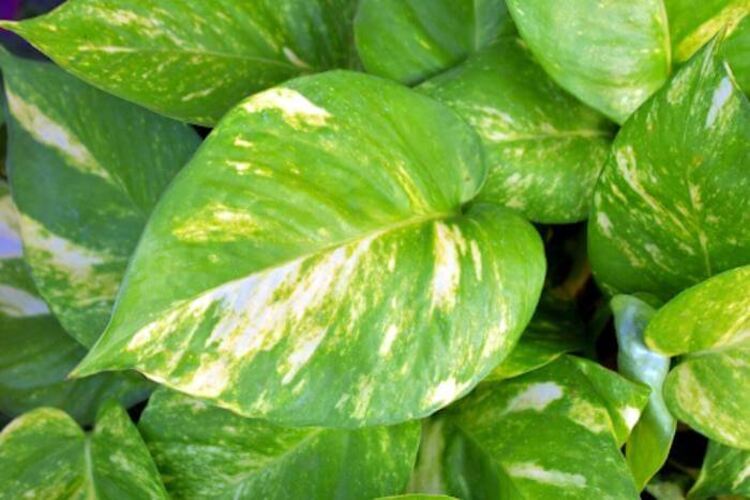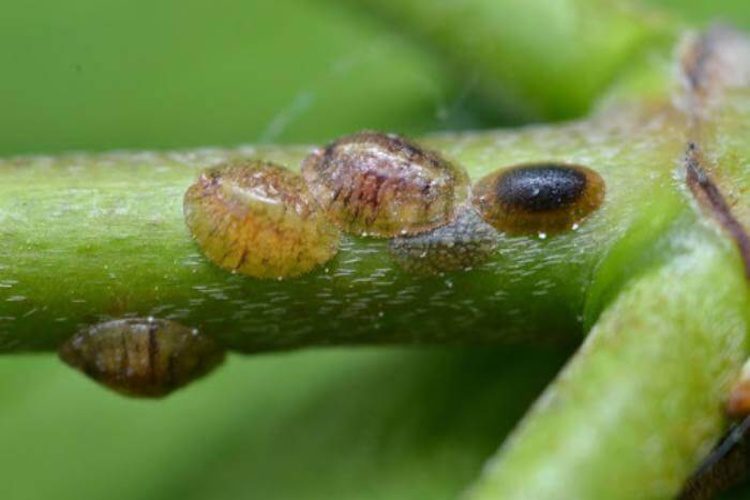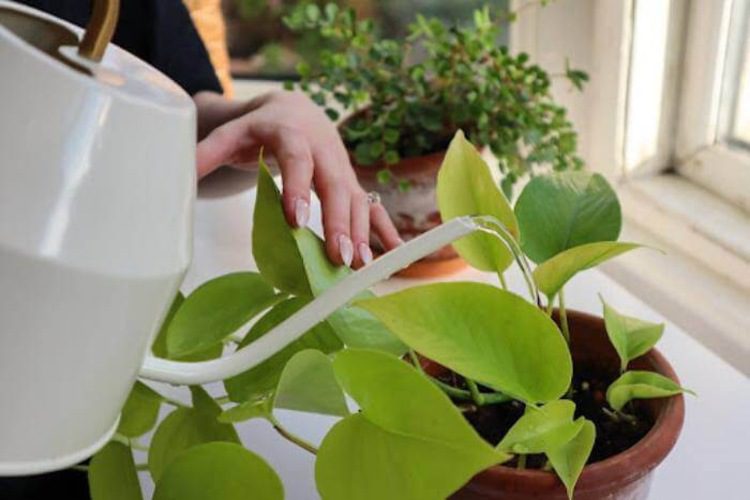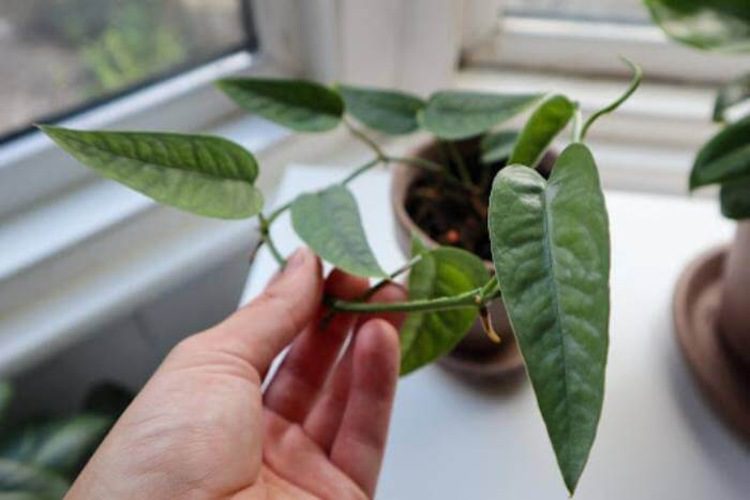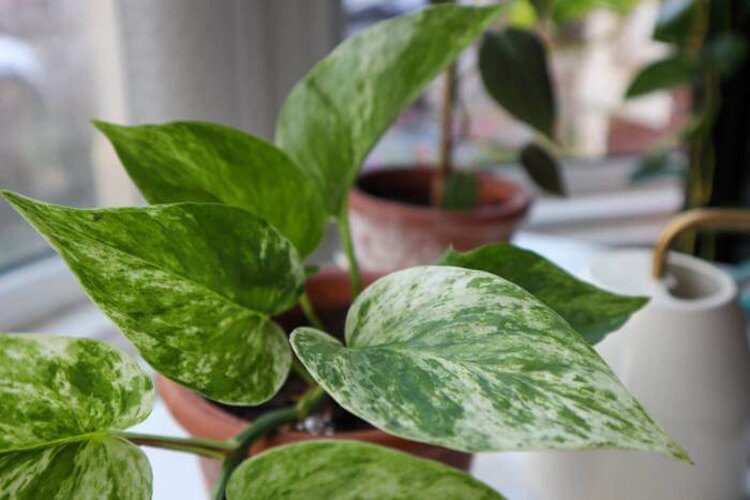Silver Pothos Vs Satin Pothos: What’s The Difference?

In recent years, Pothos has gained popularity as a houseplant among planters and other plant enthusiasts because it has a variety of leaf patterns, from green to variegated. Some of its outstanding types are the Satin Pothos and the Silver Pothos. Most people occasionally mistake Satin Pothos for Silver Pothos. They are so similar that you won’t be able to tell the difference unless you look closely.
Compared to Silver Satin Pothos, Silvery Ann Pothos seems to have more variegated leaves. Silver Satin does have more consistent variegation than Silvery Ann, making it more erratic. The specifics between those two will be covered later.
What Is Silver Pothos?
The natural habitat of the silver variant is in Southeast Asia, Queensland, the Pacific Islands, and New Guinea. The Scindapsus Pictus type governs all members of the family of Silver Pothos, and they all require the same care. Because it naturally climbs trees and rocks, the species is known by its botanical name, Scindapsus Pictus. While some varieties of Silver Philodendrons have entirely white leaves, others have varying silvery-white markings. Air pockets below the leaf’s surface cause these spots to form. It results in filtered sunlight, which causes the plant to grow its distinctive green and silvery foliage.
The Silver Pothos climbs rocks and trees in its tropical rainforest to exhibit new behaviors. This new behavior can range from generating larger foliage higher up the plant to letting the leaves fall against the structure. It has been mostly grown indoors in various nations, including the United States. The Silver plant has a shallow root system that requires little attention. It thrives in a hanging container, where its vines can create a stream of green and silver leaves. The aerial roots of this species will also help it climb if they are provided with something to grip. If the pot is big enough, you can let the plant spill out of the container.
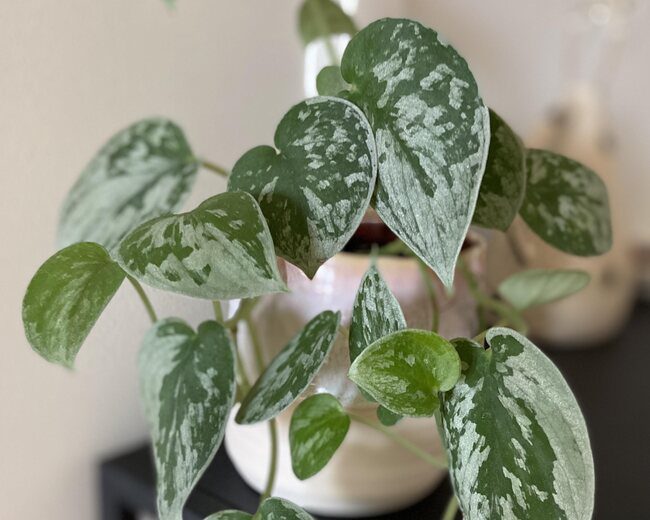
What Is Satin Pothos?
The Asian tropical rainforests are the natural habitat of the Satin Pothos, also known as the Silver Satin Pothos. It is sometimes referred to as one of the heart-shaped Philodendron variants because of its heart-shaped leaves. It has a long stem reaching 10 feet (3 meters). The Satin Pothos produces stems that fall up to 0.9m (3 feet) long when grown as indoor houseplants in pots. Your Satin Pothos will flourish in a pot, as regular pruning will encourage the development of bushy foliage.
To get the best results, hang a basket with them somewhere light. Because it creates variegated silvery blotches and dots on the matte green leaf, Satin Pothos is occasionally referred to scientifically as Pictus, which means painted. Were we to explain that they can climb as well? It does resemble its sibling plant, the Silver Pothos, and certain other types of vining Philodendron.

Compare Satin Pothos vs Silvery Ann
| Satin Pothos | Silvery Ann | |
| Botanical name | Scindapsus Pictus | Scindapsus Pictus ‘Silvery Ann’ |
| Temperature | 18–23 °C (65–75 °F) | 18–23 °C (65–75 °F) |
| Mature height | 10 ft (3 m) | 6 ft (1.8 m) |
| Mature width | 4 ft (1.2 m) | 3 ft (0.9 m) |
| Shape | Vine | Vine |
| Growth rate | Fast | Medium |
| Leaves | White 50%, green 50%, variegated | White, 50–80%, and green, 20–50%, variegated |
| Sunlight exposure | Bright, indirect | Bright, indirect |
| Soil | Well-drained, loose | Well-drained, loose |
| Soil pH | 6.0-6.5 | 6.0-6.5 |
| Watering | Every 10 to 14 days | Every 7 to 10 days |
| Diseases | Fungus | Fungus |
| Pests | Insects | Insects |
Read more: How To Propagate Satin Pothos Plant: 2 Useful Methods

Difference Between Silvery Ann and Satin Pothos
The Satin and Silver Pothos look so similar to one another, along with many other types of indoor plants, that you might mistake each for the other. There are still some observable variations between them, with their leaves among the most glaring examples. Compared to its rival plant, Silver has a slightly larger portion of tissue devoid of chlorophyll. Its leaf pattern is largely perplexing since it occasionally has large islands of grey-white color in the center and at other times is entirely white. The primary leaf portion is frequently green with single white spots. Satin Pothos, in contrast, has a more consistent pattern and much less white tissue. The middle two leaf lobes are mostly white or grey-white, but the leaf core is frequently greenish. Though it can be variegated, the leaf’s border is primarily green. Its leaves also can’t be completely white.
Regarding leaf size, Silver frequently has smaller leaves than Satin. The former has leaves that are four to five inches long and two to three inches wide when grown indoors normally, but the latter has larger leaves that are over six inches long and four inches wide. The outdoors, however, might outgrow that size. However, if the Satin Pothos leaves turn curly, it is most likely due to underwatering or too much direct sunlight outdoor.
The growth habits and environmental factors are other obvious distinctions; because Silver produces less energy, it grows more slowly. It could only reach a mature size of 6 feet tall and 3 feet broad. In comparison, Satin, which has larger leaves and grows more quickly, can reach heights of 10 feet and widths of 4 feet. Both Silver and Satin Pothos require enough moisture in terms of irrigation. The watering routine does alter a little bit, though. For instance, performing the former every 10 to 14 days and the latter every 7 to 10 days is recommended.
Conclusion
To wrap up, the primary difference between the Silver and Satin Pothos lies in their leaf patterns; the former has a more consistent pattern and much less white tissue, while the latter has a slightly bigger portion of tissue devoid of chlorophyll. Other than that, the Satin Pothos typically has larger leaves than the Silver Pothos and can reach heights of 10 feet and widths of 4 feet, while the Silver Pothos only reaches a maximum height of 6 feet and a width of 3 feet.
When it comes to watering, the Satin Pothos should be watered every 10 to 14 days, while the Silver should be watered every 7 to 10 days. Both plants require bright, indirect sunlight and well-drained, loose soil with a pH of 6.0 to 6.5.



